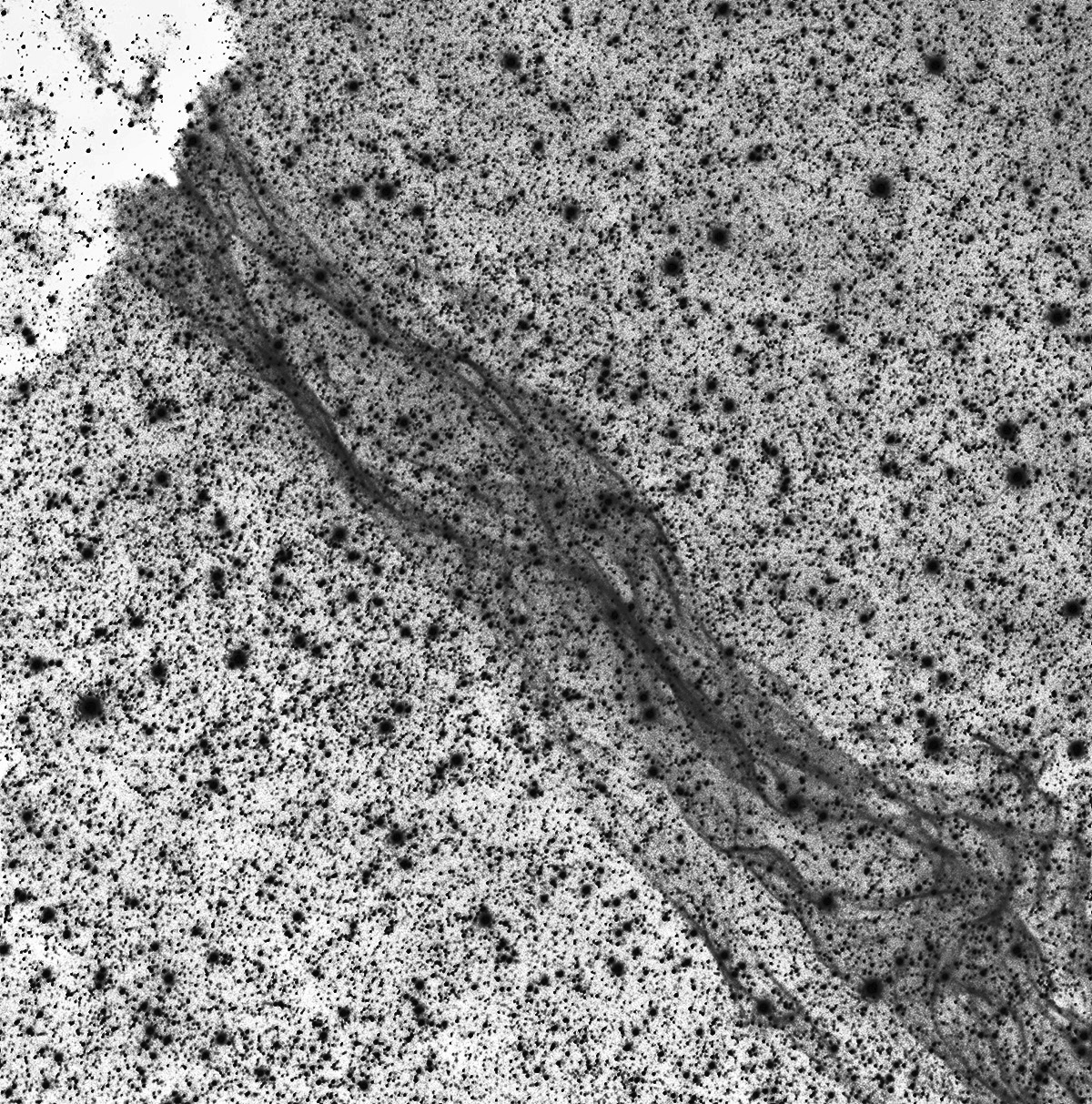_w1200.jpg)
[back] SNR G013.3-01.3 in Messier 24 in Sagittarius
| Higher resolved images / höher aufgelöste Bilder (9500 x 6350 Pixel) | RGB+SHO(CS)-Version |
| RGB-Version | |
| Hubble Foraxx Mix-Version | |
| Annotated Hubble Foraxx Mix-Version |
_w1200.jpg)
|
(c) 2023 All astro photo images are copyrighted. They may not be used or reproduced without explicit written permission from the authors. |
|
30'' |
|
About this Image / Über dieses Bild
| Camera: | Moravian C3-PRO-61000 Mono CMOS |
| Image Type, Orientation: | RGB+SHO(CS) Color Composite, North is at 12:00, see remarks for details. For high resolved images of other filter combinations use links at top of this page. North is up. |
| Exposure time: | SII: 113 x 300 s (9:25 h), Ha: 62 x 300 s (5:10 h), OIII:
247 x 300 s (20:35 h) R: 100 x 120 s (3:20 h), G: 60 x 120 s (2:00 h), B: 94 x 120 s (3:08 h) Total: 43:38 h |
| Exposure date: | July 9th...August, 12th, 2023 |
| Location: | Capella Observatory South at Kiripotib Astro Farm, Namibia |
| Filter: | Astronomik Deep-Sky Deep-Sky RGB Filter plus 6nm SII, Ha, OIII filters on Moravian EFW-3L-9-II External Filter Wheel |
| Instrument: | "Callisto", a Takahashi FSQ 106N, 530mm focal length, 106mm aperture, f/5 on modified Losmandy G11 (high res encoders with OnStepX) |
| Photographer: | Rainer Raupach, Josef Pöpsel, Frank Sackenheim |
| Remarks: |
The Small Sagittarius Star Cloud (Messier 24) offers a
glimpse of the inner arm of the Milky Way, located 10,000 to 15,000
light-years away. This view is possible due to a gap in the dust of the
galactic plane. Among the various stars, the open star cluster NGC 6603
stands out. Other notable objects in the depicted field include the open
star cluster Messier 18 (top/mid), distinct dark clouds (Barnard 92 & 93,
LDN 331, ...), emission regions (Sh2-39, 40, 43, ...), as well as recently
discovered planetary nebulae like PN G+013.8-02.8 (left edge, middle), PHR
J1825-1839 (left edge, below the middle), and StDr 156 (right edge, below
the middle). In 1995, the X-ray satellite ROSAT discovered the supernova remnant SNR G013.3-01.3 in the foreground [1], later optically confirmed in H-alpha, and observed in the radio spectrum [2], primarily based on shock induced maser emissions, such as of OH molecules. Investigations of the SNR also took place in the high-energy γ-ray window [3]. It wasn't until 2022 that other optical components besides the H-alpha wavelength were imaged, specifically ray-like structures appearing in OIII [4], emerging beneath the central dark cloud LDN 336. The image presented here is, to our knowledge, the first capture of the SNR G013.3-01.3 in the complete set of emission lines SII/H-alpha/OIII. The narrowband data were processed by subtracting the weighted red channel (for SII and H-alpha) and a weighted combination of green and blue (for OIII). The information derived from the processed SHO data represents solely the emission at those specific wave lengths, unlike the original narrowband data that additionally contained the portion of blackbody radiation, thus not allowing a clear characterization of the emission. Furthermore, narrower filters quantitatively capture less of the continuum, however, yet also do not represent the pure emission. This goal is achieved only through continuum subtraction. In the main presentation of the image, the SHO information is color-mapped to mimic the optical appearance and added to the RGB image. Alternatively, a modified Hubble palette is available, emphasizing the local intensities of the three emission lines more distinctly (use links at top of this page). A detailed view of the southern filament of the SNR
(inverted Ha image), imaged form Skinakas in 2020 can be found below. |
|
|
|
| Bemerkungen: |
Die kleine Sagittarius-Wolke
(Messier 24) gewährt einen Blick auf den weiter innen liegenden Arm der
Milchstraße in 10000 – 15000 Lichtjahren Entfernung, der durch eine Lücke im
Staub der galaktischen Ebene ermöglicht wird. Neben der generellen
Verteilung der Sterne tritt unter anderem der offene Sternhaufen NGC 6603
hervor. Weiter bemerkenswerte Objekt im abgebildeten Feld sind ferner der
offene Sternhaufen Messier 18 (oben/Mitte), die prägnanten Dunkelwolken
(Barnard 92 & 93, LDN 331, …), Emissions-Gebiete (Sh2-39, 40, 43, …), aber
auch in jüngerer Zeit entdeckte planetarische Nebel wie PN G+013.8-02.8
(linker Rand, Mitte), PHR J1825-1839 (linker Rand, unterhalb der Mitte) und
StDr 156 (rechter Rand, unterhalb der Mitte).
|
Detailed view of the southern filament of the SNR (inverted Ha image)

|
(c) 2023 All astro photo images are copyrighted. They may not be used or reproduced without explicit written permission from the authors. |
|
60"' |
|
About this Image / Über dieses Bild
| Camera: | AndorTech DZ436 |
| Image Type, Orientation: | Inverted Ha image |
| Exposure time: | Ha: 6 x 600s |
| Exposure date: | September 5th, 2020 |
| Location: | Skinakas Observatory at Crete, Greece |
| Filter: | 7,5nm Spectrofilm Ha-Filter |
| Instrument: | Skinakas 129cm-Telescope f=9857mm |
| Photographer: | Makis Palaiologou, Stefan Binnewies, Josef Pöpsel |
Back to the Supernovae-Remnants Overview / Zurück zur Supernovae-Überreste-Übersichtsseite